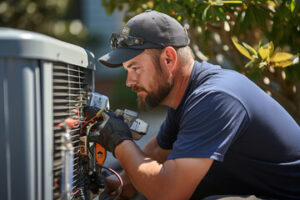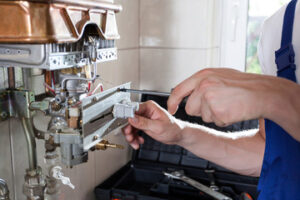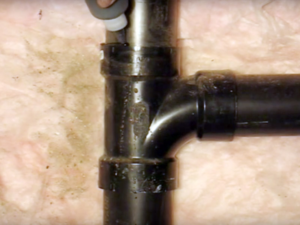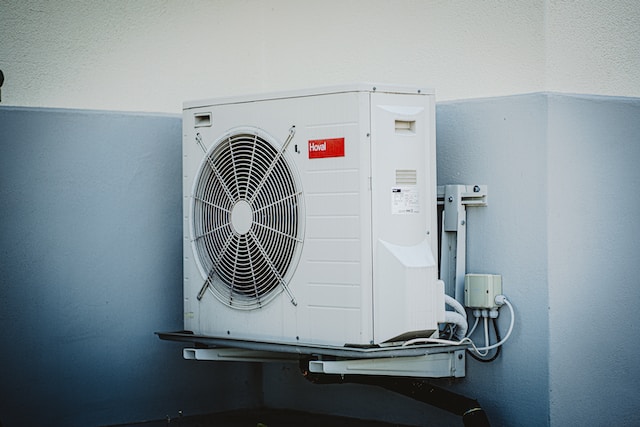Cincinnati Air Conditioning is a vital part of home comfort. It can help reduce the risk of heat stroke, dehydration, and other health problems.

The cooling process begins when a thermostat signals the compressor to turn on. It raises the pressure and temperature of refrigerant gas until it reaches the evaporator coils and cools them.
The most obvious and immediate function of air conditioning is to cool indoor spaces. It’s vital for human comfort, and it helps people work and study effectively, keeps food and medicine safe, and reduces the risk of heat-related illnesses. But air conditioning is also a major contributor to climate change, consuming 10% of global electricity (together with electric fans) on the hottest days of the year and leaking potent planet-warming gases into the atmosphere.
Today, we use air conditioners in nearly every home and office. They work by transferring heat from hot air to cold air, which then changes from a gas into a liquid, cooling the air. This process, called condensation, releases a small amount of water into the air as well.
To make the most of energy efficiency, air conditioners remove this water through a process called dehumidification. This helps the system operate at lower temperatures without sacrificing comfort and is crucial for saving energy, because it takes more BTUs to cool humid air than dry air.
Air conditioners also release waste heat into the atmosphere, which increases city temperatures and contributes to the urban heat island effect, a phenomenon where cities appear warmer than their surroundings because of all the air conditioning. The waste heat can also strain power grids during peak demand during heatwaves, increasing the chances of outages and leaving people vulnerable.
The cooling industry is working to develop more environmentally friendly alternatives. One approach is to use solar panels to capture energy from the sun and replace the electricity needed for cooling. Another involves a film made of salt and silver that absorbs and stores excess energy, returning it to the grid when needed.
Dehumidifying
In many spaces, high humidity levels are to blame for musty odors and mold and mildew growth that can damage furniture and building materials. Dehumidification removes excess moisture from the air, ensuring that indoor environments are free from these problems while also being comfortable to live and work in.
In addition to removing musty odors and preventing the formation of mold and mildew, dehumidification can help reduce the risk of respiratory diseases and allergies by lowering ambient moisture levels. Removing the buildup of humidity can also reduce the amount of dust and dirt in the air, which makes it easier to breathe.
Humidity is a measure of the amount of water vapor in the air and is influenced by various factors, including weather conditions, indoor activities like cooking and bathing, and the number of people in an area. Dehumidification equipment can be used to help maintain a healthy level of humidity in indoor spaces, and it can be added to an existing air conditioning system or installed as part of a new HVAC installation.
Air conditioners naturally dehumidify to some extent but are not optimized for the task. A standalone piece of dehumidification equipment is usually required to provide more effective and consistent dehumidification than an AC system alone.
Dehumidifiers remove excess moisture by running incoming air over coils that separate out the moisture content. Moisture is deposited into a drain pan, and the air is pushed back through the home or workspace.
An eco-friendly alternative to traditional dehumidification is solar dehumidification, which uses energy from the sun to remove moisture from the air. It’s efficient, cost-effective, and does not require refrigerant gas (SGG), which poses a potential threat to the environment as it contributes to ozone depletion.
Adding a dehumidifier to an existing air conditioner can reduce the amount of run-time that an AC system takes to control humidity, which cuts energy costs and saves on repair bills. A properly sized dehumidifier can also be integrated with a new HVAC system to optimize comfort and efficiency. In the case of a whole-home dehumidifier, it can be connected to every vent in your home for maximum efficiency.
Noise Pollution Control
Noise pollution is a phenomenon that affects the environment in many ways. It can affect the acoustic environment, disturb animal and plant life, and cause health problems in humans. It is caused by various sources of sound, including traffic, airplanes, trains, and other machines. It can also be caused by loudspeakers, music, and other appliances. Noise pollution is a serious problem that needs to be controlled.
In 1972, Congress created the Office of Noise Abatement and Control (ONAC) within EPA to regulate environmental noise and promote public education about its harmful effects. This was done to protect the health of Americans and to combat the increasing problem of environmental pollution, especially in the areas of water, air, and noise. However, after President Nixon left office, the ONAC was abolished and state and local governments were left to fend for themselves when it came to controlling environmental noise.
There is a direct link between the level of environmental noise and human health. This is because prolonged exposure to noise causes a variety of problems, such as sleep disturbance and cardiovascular and metabolic issues. It can also damage children’s mental and physical development. It is especially dangerous for marginalized communities, such as those living near highways.
The best way to prevent noise pollution is through source control. Direct regulation that sets maximum emission levels on equipment is the most effective strategy, and can guarantee population-level exposure reductions. This is the strategy that has produced the greatest success in reducing noise pollution in the United States. This is largely because of technological improvements on aircraft engines and other industrial equipment, as well as stricter environmental laws.
Other methods for preventing noise pollution include the use of noise-reducing materials and soundproof windows in buildings. This can make it easier to get a good night’s sleep and reduce the amount of noise that is heard in a home or business. The government should also require that cities and towns use a uniform set of ordinances to control the amount of environmental noise. This can help to reduce the amount of pollution and improve overall quality of life for all residents in the community.
Energy Efficiency
Energy efficiency is the ability to provide the same benefits of an appliance, building or system with less energy. This includes the energy used to generate, distribute and deliver power as well as the energy wasted in converting heat into useful work. In many countries, energy efficiency measures are the most cost-effective ways to reduce greenhouse gas emissions (GHGs) and reduce electricity bills.
Air conditioning systems consume a significant share of electricity in buildings, with peak demand for air conditioning increasing electricity use by up to 50% in some countries (IEA 2008). Energy efficient technologies, including improved design and operation practices as well as better building shells, can significantly reduce cooling loads. Similarly, higher EER and SEER ratings on room air conditioners reduce energy consumption compared to existing equipment.
The highest energy-efficient AC units have a SEER rating of over 16 and an EER of over 13. The higher the SEER and EER ratings, the more efficiently your air conditioner operates. You can find these ratings on the Energy Star label.
Energy-efficiency programs have delivered substantial environmental, economic and public health benefits in the US. For example, energy efficiency initiatives have contributed to declining US greenhouse gas emissions in recent years. These reductions are crucial to meeting our climate goals and limiting global temperature increases below 2 degrees Celsius (IPCC, 2013).
Aside from the environmental benefits of reduced GHG emissions, energy-efficiency improvements also help cut energy costs for homes and businesses. This is particularly true if you replace an old, inefficient air conditioner with a new high-efficiency model.
However, barriers remain that prevent greater energy efficiency adoption. Firstly, financial constraints hinder the development of more efficient appliances. For instance, medium and small domestic manufacturers are reluctant to invest in developing more efficient equipment due to market competition and low sales revenues. Secondly, consumers need to understand and appreciate the benefits of more efficient models. They need to be aware that the initial investment of a more energy-efficient model can often be repaid through the significant electricity savings that are achieved over its life cycle.



